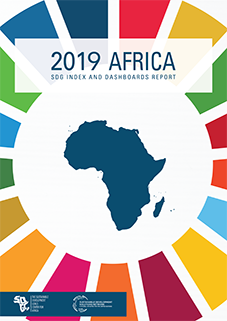More details
Executive Summary
The 2019 SDG Index and Dashboards Report provides an assessment not just of where African countries stand with respect to the SDGs and their progress toward the goals, but also how African governments are implementing strategies for achieving them. The key findings of both of these assessments are summarized below.
While the 2018 report included only 11 countries in the preliminary analysis of SDG implementation, this report includes all 54 African countries. To make the survey more comprehensive, additional questions were added, organized around the following 6 areas: (i) national strategies and baseline assessments in the executive, (ii) budgeting practices and procedures in the executive, (iii) stakeholder engagement, (iv) coordinating units in the executive, (v) legislative actions, and (vi) main challenges for implementation. The overall findings on government implementation of the SDGs are as follows:
- The SDGs have widely received official endorsements by African governments and have been incorporated into many government action plans and national strategies.
- There are still widespread gaps on behalf of countries in understanding the distances to SDG targets.
- There is a lack of understanding on what it will take to reach the SDGs, very little consideration for the financial resources that will need to be mobilized, and who will provide the necessary funds.
- Engagement with the public and other stakeholders can significantly be improved. Only four countries have an online portal where citizens can see their countries’ progress toward the SDGs, and less than half of all countries have done awareness-raising activities.
- According to country experts, who validated results for 21 countries, a lack of funding and resources is reported to be the single most significant challenge both in terms of SDG implementation and monitoring.
In terms of the current status and trends toward achieving the SDGs in Africa, this year’s analysis presents a comprehensive and comparable monitoring framework at the continental, subregional, and national levels. An additional new feature in this report is an analysis and grouping of countries according to their performance on each of the SDGs. Some key findings include:
- Changes in the methodology and the data sources used to generate the 2019 Africa SDG Index have produced different results from last year’s report. The average SDG index score across countries has remained virtually unchanged, but some of the rankings have changed.
- Overall, North Africa is the best-performing region on average, while Central Africa is the worst-performing. Mauritius has replaced Morocco as the top-ranking country, while Morocco is now ranked in 4th place, behind Tunisia and Algeria.
- Across the board, African countries perform comparatively well in terms of sustainable production and consumption as well as in climate action (SDGs 12 and 13) but perform poorly in goals related to human welfare (SDGs 1 to 7 and 11).
- There is a great deal of diversity with respect to the main SDG challenges in Africa’s subregions. Countries can be broadly categorized into five major groups: continental leaders, which do better in terms of human welfare but need to improve environmental performance; growing countries, which are catching up to the leaders but have high inequality; middle-of-the-pack countries, which must maintain environmental performance while improving human welfare; emerging countries, which are also experiencing growth but still lag in terms of human welfare; and distressed countries, most of which are experiencing conflict, that will require the most support to achieve the SDGs.
